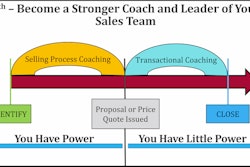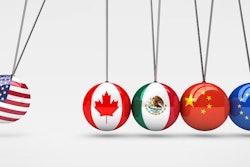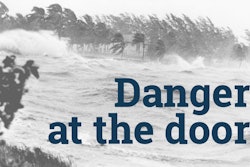
“Crises are not isolated occurrences for truck dealers. The normal ebb and flow of the new truck ordering cycle and periodic used truck valuation corrections ensure the next financial threat to your commercial truck dealership is closer than you think,” says Whitnell, advisor, Used Truck Operations and Dealership Acquisition Services.
Whitnell says dealers that emerge in the strongest financial condition after the dust settles have flexible financial plans, human resource staffing requirements and customer engagement actions that easily can be adjusted to current circumstances and quickly implemented. “Time is of the essence,” he adds.
In the event of any significant occurrence, whether it’s a natural disaster, pandemic or just a general downturn in business, dealers need to be able to “cash flow” their way through a crisis, says Ichniowski, professional advisor focused on the strategic and financial areas.
“One metric that is critical to track in any dealership that we use at KEA Advisors is cash months’ supply. Our guide is to carry at least two months cash supply, which is liquid cash on hand that covers the entire expenses of the dealership for a 60-day timeframe,” he says. “The higher your metric the more liquid is your company and you will have greater flexibility in managing through any hardship and keeping your business model intact.”
Although the amount of cash required to manage through a business disruption varies by circumstance, “A hard and fast rule on the level of cash required to survive the crisis does not exist,” Whitnell says. Having a comprehensive crisis management plan is more important than the amount you have reserved, he adds.
Following are some actions foundational to any dealership “Crisis Response” plan, according to Whitnell:
- Immediately conserve cash by eliminating all discretionary expenses. Many dealerships have elevated the level of approval necessary to get an expense approved for payment to add visibility to cutting expenses.
- Immediately implement a hiring freeze and allocate responsibilities for unfilled positions to existing staff.
- Have your human resource manager develop a list of employees to be separated under various disruption scenarios (10 percent decline in revenue, 20 percent decline in revenue, greater than 25 percent decline in revenue). Target implementation date as quickly as legally possible.
- Aggressively manage receivables. Customers likely will be adversely impacted by this crisis, too.
- Reduce floor plan interest expense by accelerating delivery of new truck units and immediately eliminating all stock truck purchases (new and used).
Starting from scratch
Dealerships who don’t have an emergency reserve fund likely are considering one as they watch the sweeping effects of the coronavirus throughout the nation. So, where to start?
“Many dealers, while they may set up reserves on their books during normal course of business, do not always set aside the cash to support that on their balance sheet. For example, if you set up a reserve for bad debt accrual of $10,000 per month then take that cash from the current month cash flow from operations and set it aside in a separate account if you have to,” Ichniowski says.
“That way, when you go to write off the expense, there is no cash effect on your results of operations. This becomes even more critical in difficult times as the risk or your customers not paying you goes up exponentially,” he says.
Ichniowski also suggests the following tips: “Manage off your balance sheet [because] that is where the wealth of the dealership resides and employ strict guidelines for asset management. The financial statements are what I call lag measures. They are produced after the month is over and you cannot change the results — great for historical data and trend analysis but look to more of a lead measure, such as a rolling 18-month forecast on where the business is headed.”
Whitnell provides the following steps to establishing a reserve fund:
- Work on your plan for the next crisis, “which is already percolating out there somewhere. Get ready.”
- Reduce debt by lowering inventory levels, paying off any outstanding notes, getting current on payables and paying off any other outstanding debt.
- Establish a budget for reserve for your 2021 operating plan. Whatever you can afford is better than nothing.
- Consider establishing a separate account for putting the proceeds of your future reserve contributions. Keep it isolated from the cash requirements of managing your business each day.
While it might be difficult to start a reserve fund now, given the circumstances, industry experts have provided tips and experiences to help get aftermarket distributors and dealers on their way to establishing — and maintaining — a reserve fund. The result will be a more solid company better prepared for the next unexpected event.
To read Part 1 of the feature in Trucks, Parts, Service, CLICK HERE.










